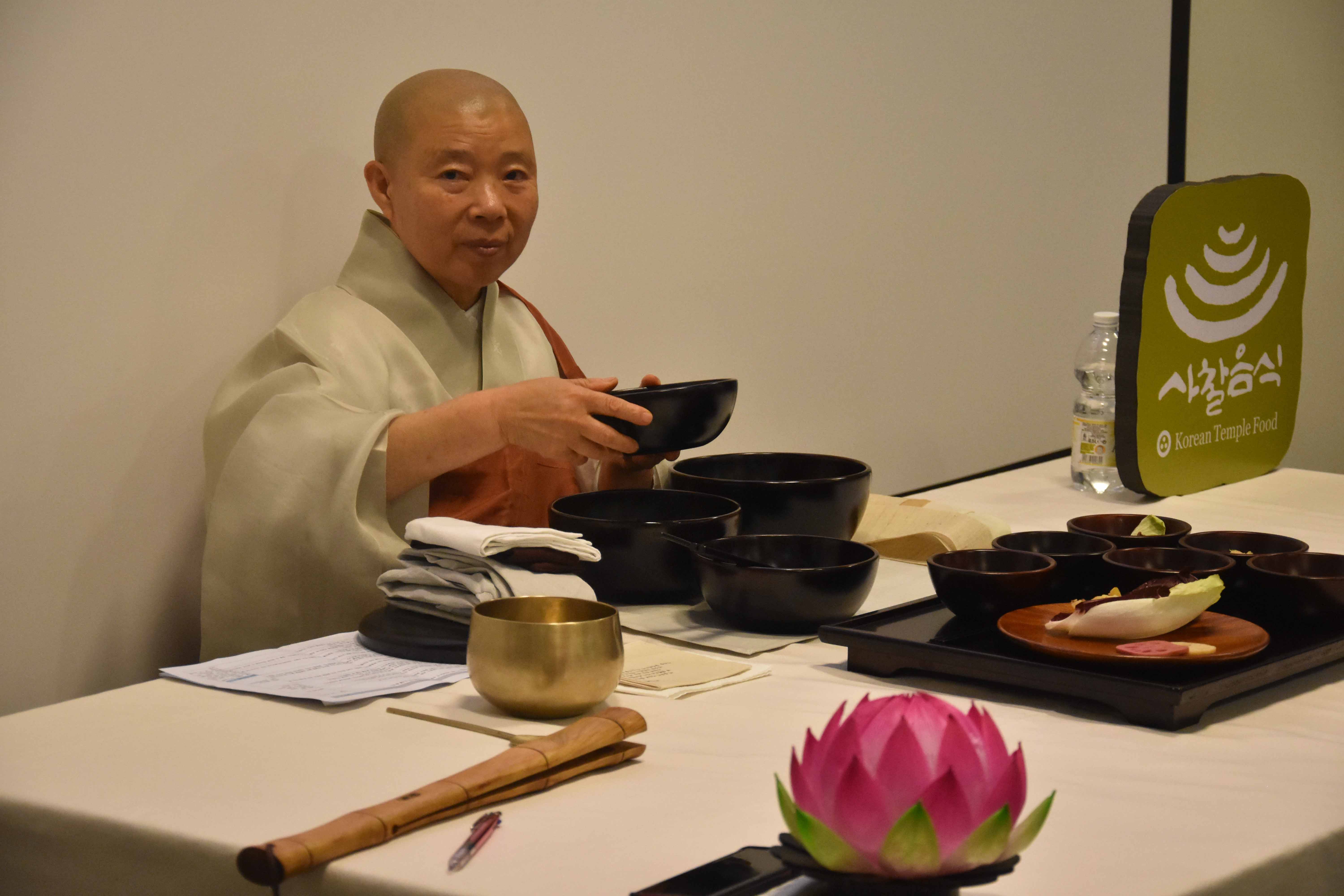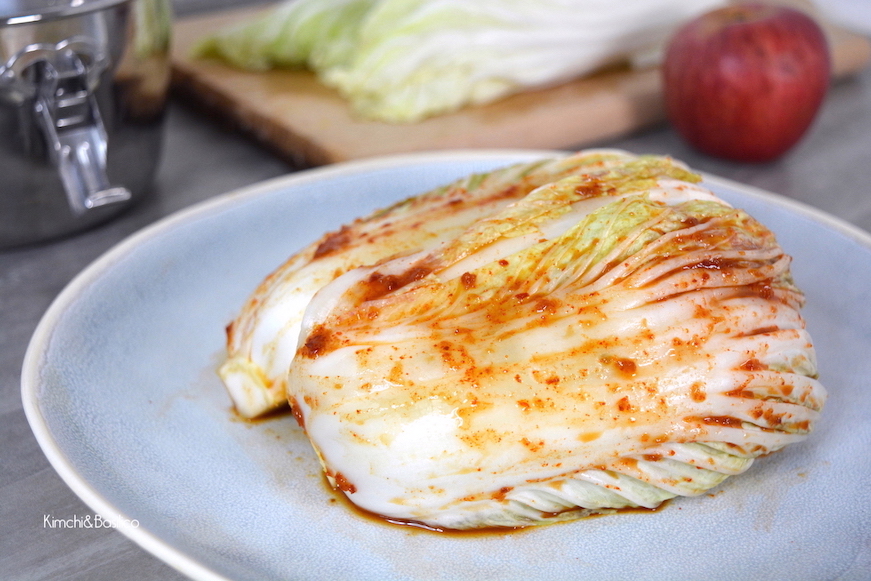- 한국어
- English
- 日本語
- 中文
- العربية
- Español
- Français
- Deutsch
- Pусский
- Tiếng Việt
- Indonesian
By Honorary Reporter Vincenzo Acampora Carratura from Italy
Photo = Vincenzo Acampora Carratura
The Cultural Corps of Korean Buddhism and the overseas branches of the Korea Tourism Organization this month offer online lectures and cooking workshops on the food served at Buddhist temples in Korea, or temple food.
My interest in such food started a few years ago at a class held at the Korean temple food center in Seoul's Insa-dong neighborhood. This was a great opportunity to learn more about the religious and philosophical principles behind temple food.
Back in Italy, I had the privilege to join a lecture given by the Ven. Jeong Kwan in Turin during a Korea Week festival in 2019 and eat baru gongyang, the traditional formal meal of Korean Buddhist monks.

The Ven. Jeong Kwan gives a lecture in Turin, Italy. (Vincenzo Acampora Carratura)
This event promoted not only temple food but also vegan kimchi. The traditional Korean Buddhist diet bans animal products (though certain Buddhist schools allow animal products in their food) as well as green onions, garlic, onions, chives and leek. This is based on the belief that the pungent odor and flavors of these vegetables disrupt monks while they meditate.
So how do monks make kimchi, a staple of Korean cuisine, since traditional kimchi is prepared with several ingredients forbidden in Buddhist cuisine like garlic, saewoojeot (fermented shrimp) and green onions?
These ingredients are substituted with wild herbs, seasonal vegetables and fruit. This preparation might look simpler but the nutritional content remains the same, and the flavor gets more complex thanks to the use of the replacement herbs.
Since access to Korean vegetables and fruit is difficult in Italy, I prepared my vegan kimchi using the Italian apple variety mela annurca, which has crunchy white flesh, balanced acid and sweet flavors.

This is the result of my attempt at vegan kimchi.
I always associate kimchi making with my time in Korea, and many fond memories come back to me like my first kimjang (kimchi-making process in winter) in Busan with my friend in 2012 and Korea Week in Turin. The monk's gentle way of interacting with people showed in the way she treated the ingredients and prepared the food.
The Buddhist ideals of compassion, kindness and respect are shown in the Buddhist method of food preparation. While I made vegan kimchi, I thought that humans should remember these principles in daily life, especially during these difficult times.
enny0611@korea.kr
*This article is written by a Korea.net Honorary Reporter. Our group of Honorary Reporters are from all around the world, and they share with Korea.net their love and passion for all things Korean.